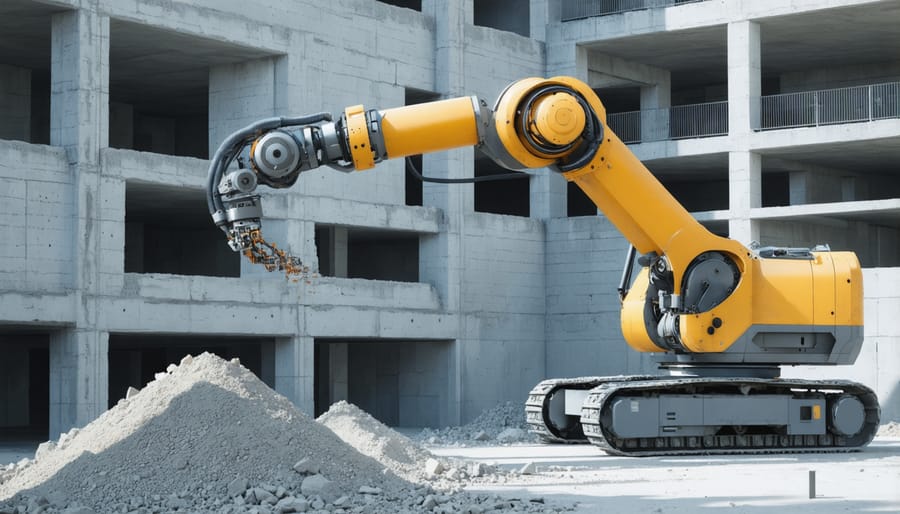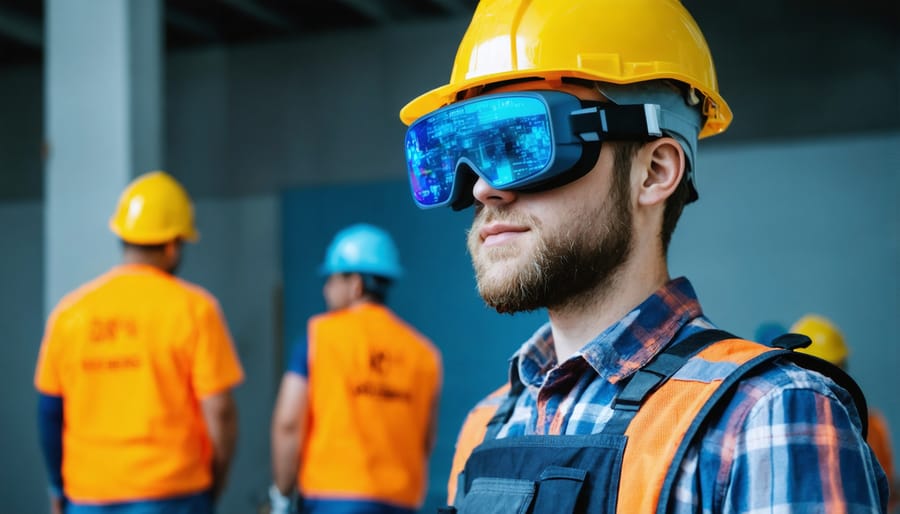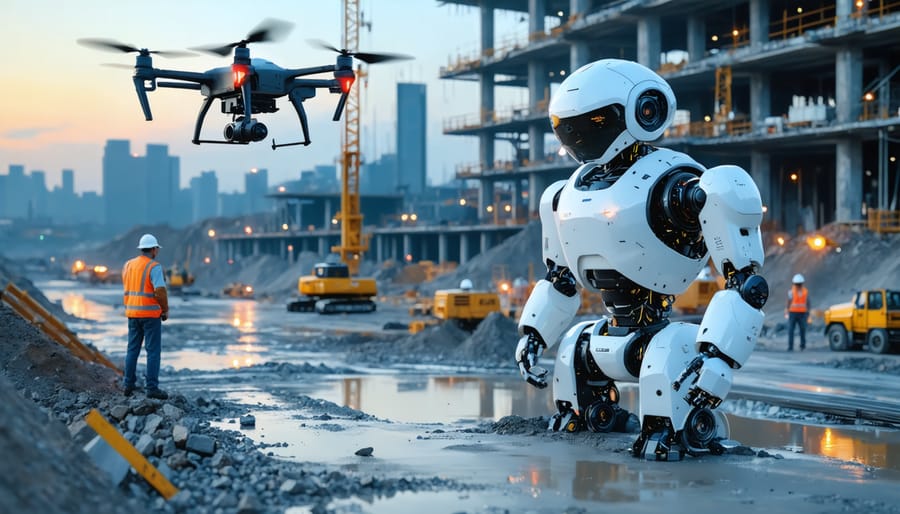The construction industry stands at the cusp of its most transformative era, driven by breakthrough technologies that are revolutionizing how we design, build, and manage infrastructure. From autonomous robots laying bricks with precision to artificial intelligence optimizing project schedules, emerging construction technologies are addressing decades-old challenges of productivity, safety, and sustainability. Digital twins now enable real-time project monitoring and predictive maintenance, while 3D-printed buildings demonstrate the potential for reducing construction time by up to 70% while minimizing material waste. As global construction demands surge and skilled labor shortages persist, these innovations aren’t merely improving existing processes—they’re fundamentally reimagining the future of construction.
The integration of IoT sensors, machine learning algorithms, and advanced materials science is creating smart construction sites that enhance worker safety, increase operational efficiency, and deliver unprecedented levels of quality control. For industry leaders and practitioners, understanding and adopting these emerging technologies isn’t just about staying competitive—it’s about preparing for a future where construction becomes more sustainable, efficient, and precise than ever before.
AI and Machine Learning Transform Construction Planning

Predictive Analytics in Project Management
Predictive analytics powered by artificial intelligence is transforming how construction projects are planned and executed. As AI is revolutionizing construction, project managers now have access to sophisticated tools that can analyze historical project data, weather patterns, resource availability, and market conditions to generate highly accurate project timelines and risk assessments.
These AI-driven systems can identify potential bottlenecks and delays before they occur, allowing teams to implement preventive measures proactively. By processing vast amounts of project data, these tools can predict completion dates with remarkable accuracy, often within a 1-2% margin of error. They also evaluate multiple scheduling scenarios simultaneously, helping managers optimize resource allocation and minimize downtime.
Risk prediction capabilities have become particularly valuable in large-scale construction projects. Advanced algorithms can assess thousands of variables, from supplier reliability to environmental factors, providing early warning signals for potential issues. This enables project teams to develop contingency plans and maintain better control over project outcomes. Industry leaders report up to 25% reduction in project delays and 20% cost savings through the implementation of predictive analytics solutions.
BIM Integration and Digital Twins
Building Information Modeling (BIM) continues to evolve beyond traditional 3D modeling, incorporating advanced features that revolutionize project planning and execution. The integration of digital twin technology with BIM has created powerful tools that provide real-time monitoring and predictive analysis capabilities.
Modern BIM platforms now incorporate 6D and 7D modeling, adding crucial layers for sustainability analysis and facility management. These advanced dimensions enable project teams to simulate building performance, analyze energy consumption, and optimize maintenance schedules before construction begins.
Real-world applications demonstrate significant improvements in project outcomes. For instance, the recent expansion of Singapore’s Changi Airport utilized integrated BIM and digital twin systems to reduce construction errors by 30% and improve coordination efficiency by 40%.
The technology also enables remote collaboration through cloud-based platforms, allowing stakeholders to access and update project information in real-time. This capability has become particularly valuable for managing complex projects across multiple locations and time zones.
As these technologies mature, we’re seeing increased adoption of artificial intelligence and machine learning algorithms that can analyze BIM data to predict potential issues and suggest optimal solutions, fundamentally transforming how construction projects are planned and executed.
Robotics and Automation on Construction Sites
Autonomous Construction Equipment
Autonomous construction equipment represents a significant leap forward in site operations, combining advanced AI, sensors, and robotics to perform tasks with minimal human intervention. These self-operating machines are transforming traditional construction processes by offering unprecedented levels of precision and consistency while reducing human exposure to hazardous conditions.
Recent implementations have shown that autonomous excavators can achieve accuracy levels within 1-2 centimeters of target grade, significantly outperforming manual operation. Leading manufacturers have developed systems that enable dozers and graders to execute complex earthmoving tasks independently, utilizing GPS and machine learning algorithms to optimize material movement and reduce fuel consumption by up to 25%.
Safety improvements are particularly noteworthy, with autonomous equipment featuring advanced obstacle detection systems and real-time site monitoring capabilities. These technologies have demonstrated a 73% reduction in safety incidents on pilot projects where autonomous equipment was deployed. Additionally, self-operating machinery can work continuously in challenging conditions or low-light environments, potentially extending productive hours by 35%.
The integration of autonomous equipment has shown significant cost benefits, with early adopters reporting 15-20% improvements in operational efficiency. While the initial investment remains substantial, the combination of increased productivity, reduced labor costs, and enhanced safety creates a compelling business case for implementation, particularly on large-scale projects where repetitive tasks are common.
However, successful deployment requires careful planning, specialized training for supervisory personnel, and integration with existing site management systems to ensure optimal performance and safety compliance.
3D Printing in Construction
3D printing in construction has evolved from a conceptual innovation to a transformative technology reshaping the building industry. Large-scale concrete printers now enable the creation of complex structural components and entire buildings with unprecedented speed and precision.
Recent advancements in material science have expanded printing capabilities beyond traditional concrete mixtures to include sustainable composites and recycled materials. Construction firms worldwide are deploying robotic 3D printers capable of extruding specialized concrete layers up to 50mm thick, creating load-bearing walls and structural elements that meet international building codes.
Notable projects showcase the technology’s potential: In Dubai, a 2,690-square-foot office building was printed in just 17 days, reducing labor costs by 50% and construction waste by 60%. Similarly, multiple European contractors have successfully printed residential structures, demonstrating the technology’s viability for mass housing solutions.
The technology offers significant advantages, including reduced material waste, lower labor requirements, and enhanced design freedom. However, challenges remain in standardization, material properties, and regulatory compliance. Industry experts predict that by 2025, up to 15% of new construction projects in developed markets will incorporate some form of 3D printing technology, particularly in prefabricated components and specialized architectural elements.

Smart Materials and Sustainable Solutions
Self-Healing Materials
Self-healing materials represent a groundbreaking advancement in construction technology, offering solutions to one of the industry’s most persistent challenges: structural deterioration. These innovative materials contain engineered components that automatically repair damage without external intervention, significantly extending the lifespan of buildings and infrastructure.
The most promising development in this field is bio-concrete, which incorporates bacterial spores that activate when cracks appear. When exposed to water and oxygen through these cracks, the bacteria produce limestone, effectively sealing the damaged areas. This process not only repairs the structure but also prevents water infiltration and reinforcement corrosion.
Another notable advancement is self-healing polymers used in protective coatings and sealants. These materials contain microcapsules filled with healing agents that release upon damage, creating a chemical reaction that repairs the breach. Early adopters report up to 60% reduction in maintenance costs over traditional materials.
Recent field trials have demonstrated successful applications in bridge decks, tunnel linings, and high-stress structural elements. For instance, the Netherlands’ Delft University has implemented self-healing concrete in several pilot projects, showing promising results with crack-healing capabilities of up to 0.8mm width.
The technology’s potential impact on construction sustainability is significant, as it reduces the need for repairs, extends service life, and minimizes maintenance-related carbon emissions. Industry experts project that self-healing materials could reduce building maintenance costs by 30% over traditional materials within the next decade.
Energy-Generating Building Components
Energy-generating building components represent a significant advancement in sustainable construction, merging traditional building materials with power generation capabilities. Leading this innovation are Building Integrated Photovoltaics (BIPV), which incorporate solar cells directly into building materials like windows, facades, and roofing tiles. These components serve dual purposes: maintaining structural integrity while generating clean energy.
Recent developments include transparent solar glass that achieves up to 15% efficiency while maintaining natural light transmission, making it ideal for commercial buildings with large window surfaces. Piezoelectric flooring systems have also emerged, converting kinetic energy from footsteps into usable electricity – particularly effective in high-traffic areas like transportation hubs and shopping centers.
Another breakthrough is thermo-electric wall panels that harvest energy from temperature differentials between interior and exterior spaces. These panels can generate up to 5% of a building’s energy needs while providing effective insulation.
Smart facades incorporating electrochromic technology not only generate power but also dynamically adjust their opacity to optimize energy efficiency. This technology has shown potential energy savings of 20-30% in commercial buildings.
Implementation costs remain a consideration, but ROI periods have decreased significantly, typically ranging from 5-8 years. As manufacturing scales up and efficiency improves, these components are becoming increasingly viable for mainstream construction projects, offering both environmental benefits and long-term cost savings.
IoT and Connected Construction Sites
Real-time Monitoring Systems
Real-time monitoring systems have revolutionized construction site monitoring through the integration of advanced sensor networks and sophisticated data collection platforms. These systems employ a combination of IoT sensors, RFID tags, and environmental monitoring devices to provide continuous, real-time insights into project progress and site conditions.
Smart sensors strategically placed throughout construction sites track various parameters, including structural integrity, equipment utilization, environmental conditions, and worker safety metrics. These devices transmit data to centralized platforms where advanced analytics process the information, enabling project managers to make informed decisions quickly and effectively.
Environmental sensors monitor air quality, noise levels, and weather conditions, ensuring compliance with regulations and worker safety standards. Structural sensors embedded in concrete elements track curing processes and detect potential issues before they become critical problems. Meanwhile, wearable devices equipped with GPS and biometric sensors help monitor worker locations and vital signs, enhancing site safety protocols.
The implementation of these monitoring systems has demonstrated significant benefits, including:
– 35% reduction in safety incidents
– 25% improvement in project timeline accuracy
– 20% decrease in equipment downtime
– Enhanced quality control through continuous monitoring
– Improved regulatory compliance documentation
Real-time monitoring platforms also facilitate better communication between stakeholders by providing instant access to project data through mobile applications and web-based dashboards. This transparency helps identify potential issues early, enabling proactive problem-solving and more efficient project management.

Connected Worker Technology
Connected worker technology is revolutionizing construction site safety and operational efficiency through innovative wearable devices and smart Personal Protective Equipment (PPE). These technologies integrate IoT sensors, GPS tracking, and real-time monitoring capabilities to enhance worker protection while providing valuable data insights for project management.
Smart helmets equipped with augmented reality displays enable workers to access critical project information, safety protocols, and real-time communication without interrupting their tasks. These helmets often include features like environmental monitoring sensors that detect hazardous conditions, temperature variations, and noise levels, alerting workers to potential dangers before they become critical.
Wearable devices, such as smart vests and safety bands, continuously monitor vital signs, physical strain, and worker location. This data helps prevent fatigue-related accidents and enables rapid response during emergencies. Some advanced systems incorporate motion sensors that detect falls or unusual movements, automatically triggering emergency protocols when necessary.
Construction companies implementing connected worker solutions report significant improvements in safety metrics and productivity. For example, a major construction firm recorded a 55% reduction in workplace incidents after deploying smart PPE across their sites. The technology also streamlines documentation and compliance reporting through automated data collection and analysis.
As these technologies evolve, integration with project management platforms is becoming standard, creating a comprehensive digital ecosystem that connects workers, supervisors, and safety managers. This interconnected approach not only enhances safety but also provides valuable insights for process optimization and risk management, making it an essential investment for forward-thinking construction organizations.
The rapid evolution of construction technologies is fundamentally transforming the industry landscape, creating unprecedented opportunities for efficiency, sustainability, and innovation. As we’ve explored throughout this article, technologies like AI-driven project management, robotics, 3D printing, and advanced materials are not merely theoretical concepts but practical solutions already delivering measurable results across construction projects worldwide.
The impact of these emerging technologies extends beyond mere operational improvements. They’re reshaping workforce dynamics, environmental sustainability practices, and project economics. Construction firms embracing these innovations report significant improvements in project completion times, cost reduction, and worker safety, while simultaneously reducing their environmental footprint.
Looking ahead, the construction industry is poised for even more dramatic transformation. The integration of IoT sensors, digital twins, and machine learning algorithms will likely become standard practice within the next decade. Industry experts predict that autonomous construction equipment, advanced prefabrication techniques, and smart materials will continue to gain traction, driving the industry toward a more automated and data-driven future.
However, successful implementation of these technologies requires careful consideration of investment costs, workforce training, and regulatory compliance. Organizations that strategically adopt and integrate these innovations while maintaining focus on practical applications and ROI will be best positioned to thrive in this evolving landscape. The future of construction clearly lies in the intelligent application of these emerging technologies, balanced with traditional construction expertise and proven methodologies.

